The United States needs energy storage to reach the carbon-free electricity goals necessary to curb the worst effects of climate change. Storage technologies make renewables dispatchable like fossil fuels, yet they’re still not in abundant use.
“We are seeing significant demand for solar paired with energy storage across the United States for use-cases such as firming, shaping, minimizing curtailment risk and enabling the solar to look more like baseload power,” said Josh Rogol, chief development officer at Strata Solar, in an email.
One reason adoption of storage hasn’t exploded yet is the lack of a federal tax credit to reduce the cost of deployment. Currently, storage must be paired with solar to receive an ITC. Further, a battery can only take advantage of the solar ITC if it is at least 75% charged directly from the PV asset it’s paired with for five years. That means the paired batteries cannot perform many of the additional demand arbitrage functions they’re capable of, lest they forfeit the ITC.
“The structure of the investment tax credit today drives technology and design decisions that often lead to suboptimal technical and financial structuring that could be ameliorated by broadening the ITC eligibility, specifically by eliminating the need for the [battery] to be charged by PV during the five-year ITC recapture period,” Rogol said.
Morten Lund, partner at law firm Stoel Rives, said hybrid solar + storage facilities hamstring batteries.
“[Batteries] can do 100 different things, but if you can only charge from the solar system, you can only do really two or three or even just one. They basically become time-delay equipment and nothing else,” Lund said. “If you unbundle them, now you’re free to do full grid-support services from your battery, while also providing that time-shift service for the solar system.”
Those grid-support services include frequency regulation and voltage support, while many battery owners also want to take advantage of time-of-use rates and charging from the grid on poor solar harvest days.
Mark Frigo, VP of storage for Nexamp, said the many different functions of batteries make it difficult for them to be classified under the existing rules and regulations for energy assets, preventing them from taking advantage of credits that other assets can. At times, batteries can fall under all energy categories: generation, transmission and distribution and load.
“That’s been the biggest challenge. It doesn’t neatly fit into one of the categories as the rules have been outlined by both federal and state authorities,” Frigo said.
A more renewable power grid needs batteries
For the U.S. power grid to vastly increase clean energy on the grid, ample storage must be available to use clean power at all hours, not just when the sun is shining or wind is blowing.
“If we must transition to a world where we produce energy without carbon, the missing piece is batteries,” said Gregory Jenner, partner at Stoel Rives. “Although I think we’ll get there eventually, we’ll get there a lot faster with some sort of governmental incentive that juices the process, just like we did with solar.”
Bernadette Del Chiaro, CEO of the California Solar + Storage Association, compared the status of storage now to where solar was in 2007-08 — enjoying slow and steady upward growth, but in need of long-term government programs like the ITC to increase the pace and reach climate goals. And just as importantly, federal support for solar could be a signal to the states to do their part to implement storage-friendly policies.
“It would be really a clear indication that this is something that the United States wants to really make happen, bring to scale and deploy throughout the country to help stabilize the electric grid and transition to clean energy,” Del Chiaro said. “What we need in order to bring that technology to scale is these types of long-term initiatives and incentives, government programs to give the industry and give consumers that assurance that this is a technology we want to invest in.”
Del Chiaro appreciates that storage can qualify for the ITC in conjunction with solar, but said standalone storage projects have to be very unique to pencil out without a tax credit at this time. One example where it’s worked is a Tesla storage system installed at the Ventura River Water District plant in Ojai, California. The energy storage system is charged from the grid at night when electricity is cheaper, then the stored energy is used to pump water up the hill during the day at peak electricity hours.
“They’re able to do it because they’re in a really unique situation with really high demand charges, but there are many other customers that would want to add a battery to their facility but for whatever reason aren’t in a place to or can’t add solar,” Del Chiaro said.
Industry awaits new opportunities
Nexamp develops solar + storage projects and believes a storage ITC would open significant storage development opportunities, both with and without solar. The ITC cost savings for a company like Nexamp could be passed down to the end user, making for more affordable storage projects.
Standalone storage legislation would also offer Nexamp more flexibility in system design and grid-support functions.
“We would still pair it with solar, but you would design the system, perhaps, instead of having a DC-coupled project, you would have an AC-coupled project, where you’d be able to charge more from the grid,” Frigo said. “As a result, you might be able to offer more ancillary services than you would have been able to otherwise.”
Swinerton Renewable Energy (SRE) works as an EPC on both solar + storage and standalone storage projects and is also supportive of an additional ITC, but the company expects market growth to continue even without one.
“We are seeing a number of those projects moving forward and expect, with or without change to the ITC on storage, that those projects will continue to move forward because of the economics and the need for those type of hybrid projects,” said George Hershman, president of SRE. “Those types of enabling platforms, whether it be energy storage or clean hydrogen, are all good for the renewables industry.”
The status of standalone storage legislation
In March, bipartisan congressmembers introduced standalone energy storage tax credit legislation in both the House and Senate, and President Joe Biden released his infrastructure bill that also alludes to such a credit, but it’s still uncertain if these initiatives will pass. Until then, developers are left waiting.
“It will be great once they get it done. In the meantime, it’s making everybody’s life difficult because nobody can plan,” Stoel Rives’s Jenner said.
While the standalone ITC is important to boost the nascent energy storage market, Del Chiaro said other policy initiatives are also key to growing storage in the country.
“You’re not going to be able to bring the economy of scale for storage on the back of an ITC alone. We need to have a suite of policies like what we had for solar to help bring this technology to market,” she said.
A standalone storage ITC would mostly assist developers of larger projects, according to Del Chiaro. Residential consumers will likely continue to want their storage paired with solar, so extending the solar ITC is crucial too.
Strata Solar’s Rogol said the most important policy change necessary to benefit storage is a universal tariff system that can compensate storage projects for all the benefits they provide to the grid.
“The storage market must be compensated for more than time-of-use arbitrage for all of its benefits to the grid to be unlocked,” he said. “So long as battery energy storage has a market signal that it can react to, it can provide a compelling economic case in many parts of the grid.”
Lowering soft costs by streamlining permitting and codes and standards is also important for storage growth.
“That type of thing seems so small and boring, but it can sort of make or break this industry,” Del Chiaro said. “A ton of work went into [codes and standards] on the solar side and it took us a while, so we can learn from that and get out ahead of it.”
By creating a standalone storage ITC, extending the solar ITC and streamlining storage permitting, the storage market could rapidly scale and allow for more intermittent renewable energy to come onto the grid.
“We need the full suite of policies to really make this technology pencil out for consumers, drive those prices down and create that mature market that we are starting to enjoy on the solar side,” Del Chiaro said.

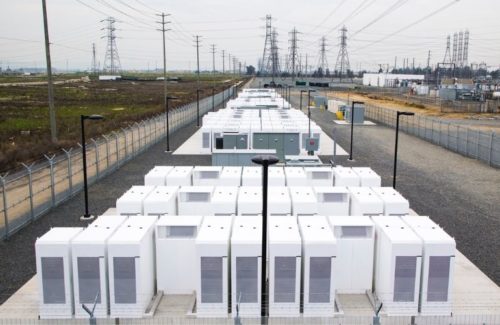
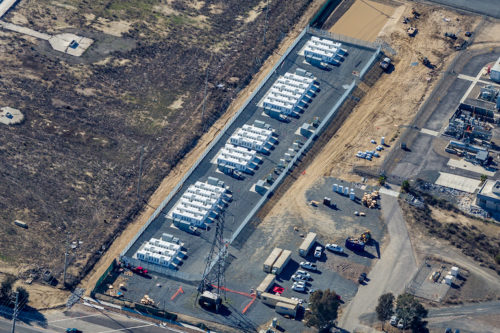
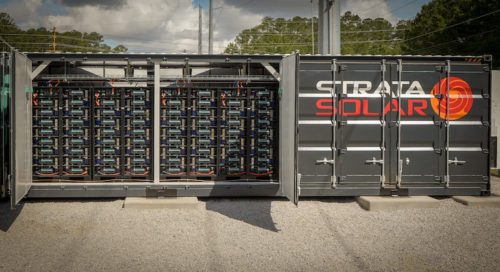
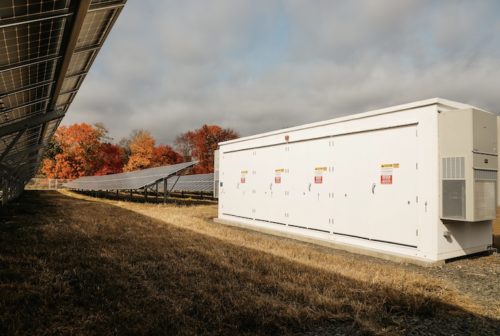
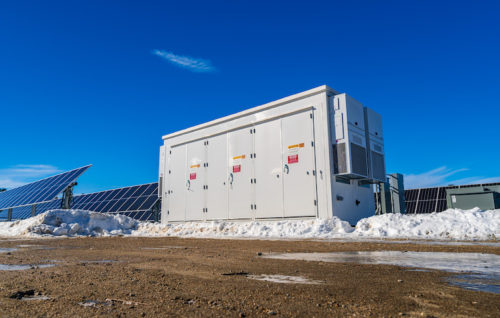




This quote by Gregory Jenner says it all.
“If we must transition to a world where we produce energy without carbon, the missing piece is batteries..”
The big thing now is do we have the resources to be able to build enough batteries? There is most likely to be a shortage in the near future.
Lack of Federal Tax Credit is not the issue, it’s the extremely high cost of storage.
We the taxpayers fund the tax credits
How about CAES?
Efficient storage is essential.
This needs considerably more r&d.
“Currently, storage must be paired with solar to receive an ITC. Further, a battery can only take advantage of the solar ITC if it is at least 75% charged directly from the PV asset it’s paired with for five years.”
That’s the “killer caveat” and I would submit, this comes directly from the rote energy sector and their lobbying firms to help them hold onto control of generation and dispatch. Cost of energy storage and in particular smart interactive ESS still lies in the $1,200/kWh installed range. I find it interesting though that in larger scale systems like small commercial and Industrial microgrids costs per kWh are dropping down as the system size increases. Some of the larger microgrids are in the $750/kWh to around $500/kWh installed price point. The small business owner and residential home owner do not have budgets from $200 thousand to $1 million or more for such a technology adoption. Looking back ‘just’ 11 years ago, the cost for energy storage batteries alone was at a price point of $1,000/kWh without any appurtenances to make a complete microgrid system. So, what happens say by 2025 to 2030 when a microgrid would become a 60kWh and up system and cost $300/kWh installed, where will the utility industry be when grid agnostic becomes the next evolutionary step in energy generation, storage and use?
“They basically become time-delay equipment and nothing else,” Lund said.”
This is a typical point of view from the utility scale model, not the self reliance and resilience point of view of residential energy users. Sooner or later I believe there will be a day when residential home owners will be able to become grid agnostic and the utilities will have to decide who their customers are and who their partners are.